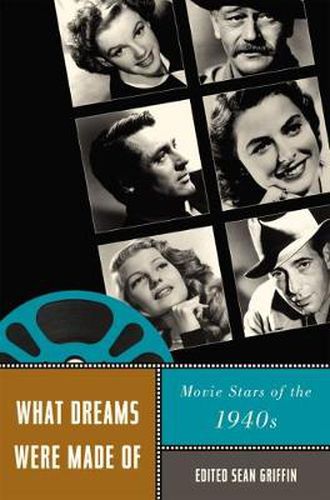Readings Newsletter
Become a Readings Member to make your shopping experience even easier.
Sign in or sign up for free!
You’re not far away from qualifying for FREE standard shipping within Australia
You’ve qualified for FREE standard shipping within Australia
The cart is loading…






Humphrey Bogart. Abbott and Costello. Judy Garland and Mickey Rooney. John Wayne. Rita Hayworth and Betty Grable. Images of these film icons conjure up a unique moment in cinema and history, one of optimism and concern, patriotism and cynicism. What Dreams Were Made Of examines the performers who helped define American cinema in the 1940s, a decade of rapid and repeated upheaval for Hollywood and the United States. Through insightful discussions of key films as well as studio publicity and fan magazines, the essays in this collection analyze how these actors and actresses helped lift spirits during World War II, whether in service comedies, combat films, or escapist musicals. The contributors, all major writers on the stars and movies of this period, also explore how cultural shifts after the war forced many stars to adjust to new outlooks and attitudes, particularly in film noir. Together, they represented the hopes and fears of a nation during turbulent times, enacting on the silver screen the dreams of millions of moviegoers.
$9.00 standard shipping within Australia
FREE standard shipping within Australia for orders over $100.00
Express & International shipping calculated at checkout
Humphrey Bogart. Abbott and Costello. Judy Garland and Mickey Rooney. John Wayne. Rita Hayworth and Betty Grable. Images of these film icons conjure up a unique moment in cinema and history, one of optimism and concern, patriotism and cynicism. What Dreams Were Made Of examines the performers who helped define American cinema in the 1940s, a decade of rapid and repeated upheaval for Hollywood and the United States. Through insightful discussions of key films as well as studio publicity and fan magazines, the essays in this collection analyze how these actors and actresses helped lift spirits during World War II, whether in service comedies, combat films, or escapist musicals. The contributors, all major writers on the stars and movies of this period, also explore how cultural shifts after the war forced many stars to adjust to new outlooks and attitudes, particularly in film noir. Together, they represented the hopes and fears of a nation during turbulent times, enacting on the silver screen the dreams of millions of moviegoers.